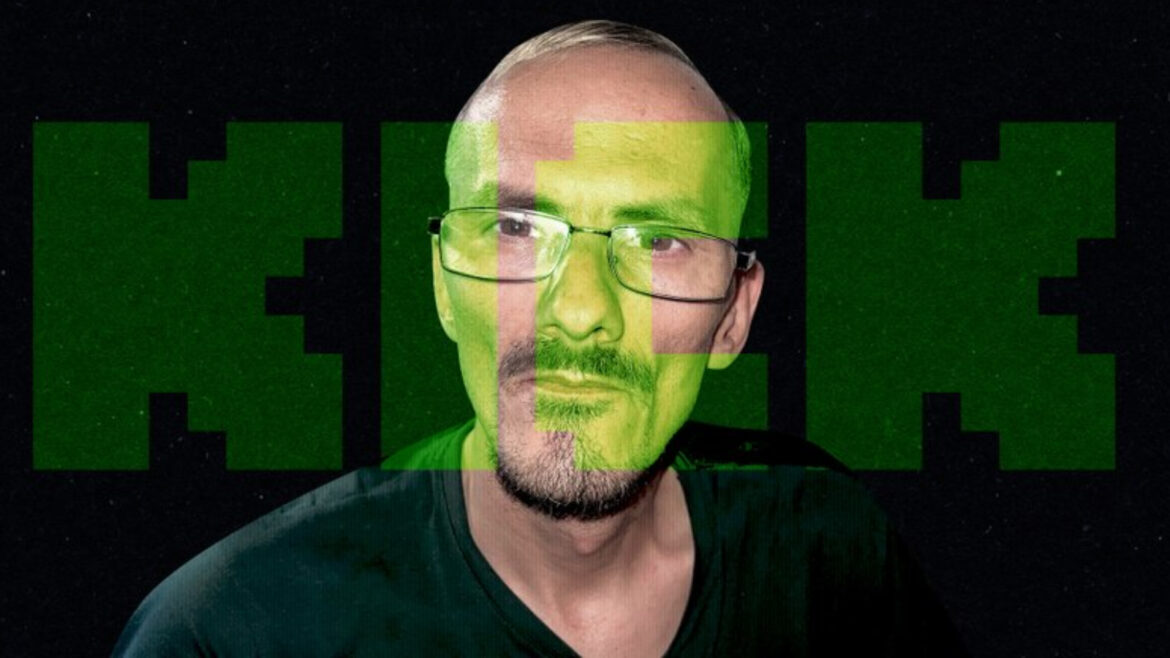Hercule Poirot travels to Egypt, only to get sucked into the politics of someone else’s bad romance, but on the bright side, there’s a lot of murder.
To be Hercule Poirot is to know you’re probably going to win. Agatha Christie’s best-known child is sharp, methodical, and insufferable, even more so now because Microids decided to make him hot. Some might argue that it doesn’t matter what Poirot looks like, but those people are wrong; I know a few of the older Blazing Griffin games stuck with Poirot’s shiny egg-shaped head, but none can hold a candle to the bowtied visage of David Suchet. I try not to dwell too much on this as I reacquaint myself with Microids’ tall, angular daddy-o – head full of hair, resplendent in a white suit and silk cravat – who first appeared in 2023’s Murder on the Orient Express. Tonight, this Poirot is in the club, and unlike David Suchet (or the entirely rizzless Kenneth Branagh), he could probably get it.
Agatha Christie: Death on the Nile review
Death on the Nile is one of Christie’s most famous works; watching new adaptations as a crime fiction fan is essentially an exercise in indulgence if you already know the main twists. It makes sense, then, that Microids’ version of Death on the Nile brings in a new playable character and story arc – Jane Royce, a young private detective and Poirot superfan who introduces herself at the club and eventually works on a case that intersects with Poirot. The prologue chapter rolls out the main characters: heiress Linnet Ridgeway meets her friend Jacqueline de Bellefort’s boyfriend Simon Doyle for the first time. Jackie and Simon are deeply in love; Linnet craves their sort of fiery romance, but can’t find it among the weedy middle-aged aristocrats vying for her attention (girl, you would have loved Raya).
Fast forward six months later: Poirot is in Egypt, checking into the hotel where Linnet and Simon are celebrating their honeymoon. Yes, that hag married her friend’s fiance, and they’re going on a lavish cruise down the Nile. It’s a timeless flavor of tea that endures in soap-style narratives today, and I firmly believe that Christie would have loved the Chinese micro-dramas that nobody wants to admit watching. Because who should show up but crazy-eyed Jackie, hellbent on revenge?
Here’s a trailer for Agatha Christie: Death on the Nile to show it in motion.Watch on YouTube
The core mystery takes place on The Karnak, a luxury riverboat, with a pit stop at an ancient historic site. Mechanically, Death on the Nile follows the same point-and-click formula as Murder on the Orient Express – the player directs Poirot to gather clues and interrogate suspects, form theories in a Mind Map, and trigger Confrontations to wring truth out of liars. The player also fills out simple profiles in Poirot’s mental rolodex to keep track of characters, but these have no real effect on gameplay. Everyone has a secret, concealed in the form of a puzzle in their respective cabins. There are also lockpicking and eavesdropping mechanics, and Jane’s chapters have some tedious stealth sections that Poirot wouldn’t be caught dead doing. Most of the puzzles feel appropriately busy without hurting the brain, but it wouldn’t be a Microids game without a couple of taskmaster-y sadistic solves.
Really though, Death on the Nile is fine. It is a cruisy, anodyne murder mystery – a moderate-to-low stakes way to spend weekday evenings, especially if you can’t remember what happened in the book or the truly godawful recent film adaptation. It is, however, noticeably unpolished in places that matter for hardcore detective fans who pay attention to how and when clues are revealed. In one chapter concerning a piece of stolen jewelry, the player character casually characterises the item as fake before I’ve even learned that for myself – perhaps a simple mistake of reshuffled, resequenced dialogue that didn’t get corrected. In another section, my character suddenly brings up a random character name that has yet to appear in the game – I only discover their existence later.
Image credit: Eurogamer / Microids
This is the thing about mystery/detective games – all these little nitpicky things matter. Proofing the dialogue matters. Casual details matter. Yes, there’s a lot of walking around and checking and re-checking, as expected of a genre that demands extreme meticulousness and overbearing scrutiny. In this world, everything is held together by fine-tooth combs and dogged obsessions, where the protagonist irons out the smallest discrepancies in every piece of information; who is Poirot if not someone who drives everyone insane with his fastidiousness?
Death on the Nile isn’t so much an Agatha Christie game as an Agatha Christie LimitedTM game, which tends to be the way of things once a couple of generations have passed, and the estate has thinned the original creator’s vision into a mid-grade, easily marketable tisane. The game itself isn’t much to write home about, though it does check the right boxes and has some lovely 1970s interiors. The voice acting runs the gamut from charming to wooden and, in the Bronx sections, unintentionally comedic, along the lines of “why does this rough-around-the edges Chinese auntie sound like an aspiring antebellum plantation owner?” Most of the characters had far juicier motivations in the book, too – I’m not sure why Microids decided to tone things down, but it felt like a loss not to embrace full-throated revenge camp in the age of reality TV and Dramabox.
Image credit: Eurogamer / Microids
Thus hobbled, I had a lot of time to reflect on literary legacy, reading, and the nature of adaptations. Yesterday I saw someone repost, with appropriate horror, a news headline that read: “Were You Assigned Full Books to Read in High School English?” While this is certainly depressing, it is not surprising, as school systems around the world bend over backwards for genAI shortcuts to a real education. The fact that many people are not reading, are unable to stay engaged with a narrative arc, or fully savor a mystery on their own, is really sad. The fact that many people don’t want to read is downright embarrassing. Agatha Christie, however, has endured, though her estate would rather us forget that And Then There Were None, which they claim is the best-selling crime novel of all time, was originally named Ten Little N*****s (or in America, Ten Little Indians).
The forms and permutations that Christie’s stories take now – in this case, as a point-and-click game – means that Poirot’s methodology takes on a literal, mechanical roteness that robs the mystery of its charm. This isn’t anyone’s fault per se, but the reality when you switch to a medium that requires didactic design. The books weren’t there for you to live vicariously through Poirot and feel smart and capable and sleuthy, and they weren’t there to teach anyone that they, too, could be an investigative savant in a three-piece suit. The books were there to tell you a story about a strange, remorseless little Belgian man, almost certainly undiagnosed, with a preternatural gift for solving crimes, making everyone upset, and all the weirdos in his orbit. The books were there to put you in uncomfortable positions and wring out every drop of scandal that emerged with every accusation and confession. Book Poirot wanted to drink his tea and be left alone with his indulgences. This Poirot is generous and magnanimous and built to house the player’s aspirations of detectivehood; sure, he has his little “I’m the world’s best investigator” flourishes as a nod to his famously massive ego. But for all the theatrical power of games, when it comes to preserving what makes Poirot stand out from any other detective, they simply can’t match the age-old freak of chewing your bottom lip while soaking up the printed word.
Image credit: Eurogamer / Microids
Agatha Christie: Death on the Nile accessibility options
Subtitles.
“I like reading, and I wouldn’t read Agatha Christie in 2025, or listen to an audiobook,” a friend said when we discussed the enduring popularity of Christie’s work. We’re currently plateauing in a particularly stale age of remixes, though some of us barely survived the Pride Prejudice and Zombies era of the 2010s. With this drive for reimagination in mind (and y’know, everything we know has its roots in something else, so it’s not like that’s conceptually new), it makes perfect sense for Microids to bring in Jane: a fresh face willing to get their hands dirty and scrap around in a very un-Hercule way. I admit I did a double-take in a scene where she’s bullying someone for information and winds up for a backhand like a cartoon pimp. If the moodboard here was “pissed-off Coffy-era Pam Grier,” it reads loud and clear. If the intent here was to contrast go-getter Jane with hands-off Poirot, it doesn’t quite land for me, especially with the paper-doll stiffness of the character models. I hate falling back on tautologies, but Death on the Nile just makes me think, you know, it is what it is. If you asked me what I would like to see instead, I might point you to 2022’s excellent Wayward Strand as a pipe dream for what really good branching narratives could do to reinvigorate old-school literary crime adaptations.
I love crime fiction. On principle, I will, to paraphrase one of Death on the Nile’s main characters, go absolutely bald-headed for an Agatha Christie game, with the full understanding that reimagination and reinterpretation are crucial parts in keeping stories alive well beyond the existence of their creators. But while there is eccentricity and tension and vitality (however subdued and English) within the pages of Christie’s decades-old books, my first lesson in playing Death on the Nile is to accept comical lifelessness in the modern world’s most interactive media form. And it is a different creature entirely.
A copy of Agatha Christie: Death on the Nile was provided for this review by Microids.





